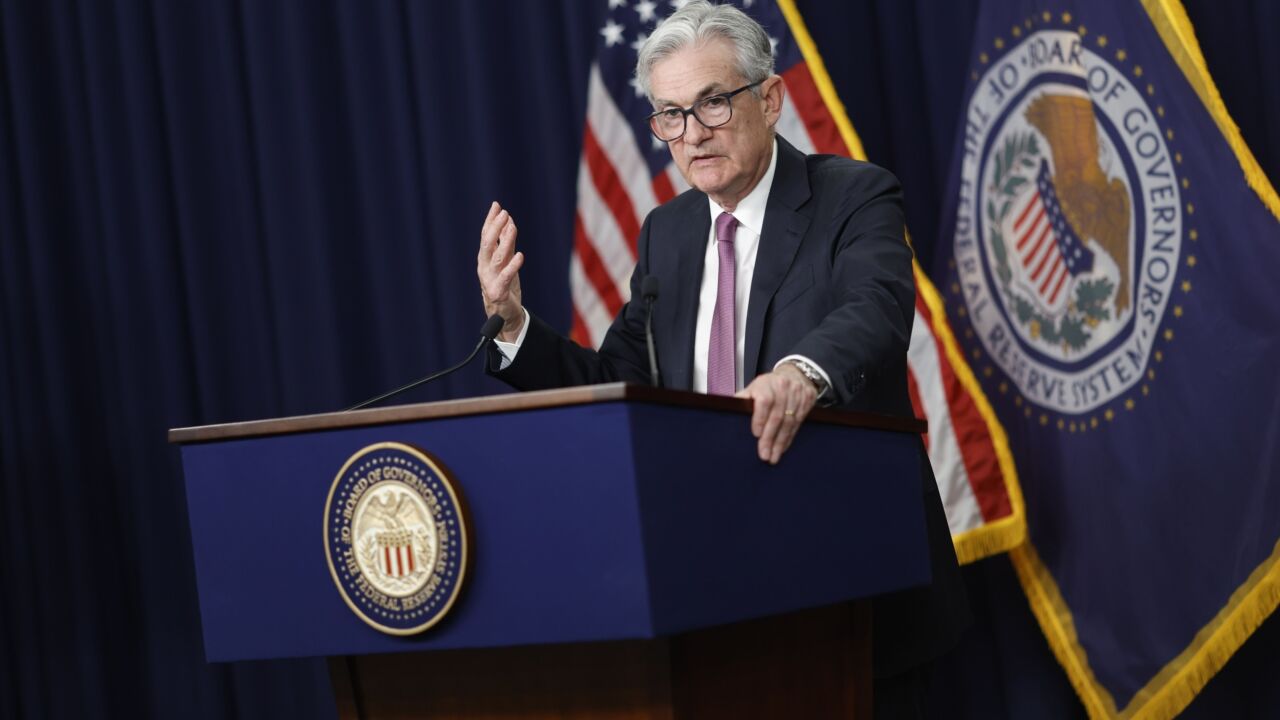New York Community Bancorp paid up for deposits in the second quarter, a move that contributed to a yearly decline in profit at the Westbury, N.Y., company.
The company’s net income fell 7% to $99 million from a year earlier. Earnings per share of 20 cents met the mean estimate of analysts compiled by FactSet Research Systems.
Shares of New York Community were down 6.6% in midday trading Wednesday to $10.65. They have fallen 19% this year.

The company has been raising rates on deposits as part of its previously stated plan to attract more deposits and reduce its reliance on wholesale funds. Deposits increased 4% year over year to $29.6 billion.
Total assets also increased 4% to $50.5 billion, as the company accelerated its efforts to increase its loan and securities portfolios now that it is no longer considered a systemically important financial institution.
The SIFI threshold was raised from $50 billion of assets to $250 billion as part of a regulatory reform package passed by Congress and signed into law by President Trump in May.
“Over the past several years, we have restricted our balance sheet growth in order to stay below the $50 billion in assets SIFI threshold,” President and CEO Joseph Ficalora said in a news release. With the threshold lifted, assets are on pace to grow by 7% this year, he added.
Still, deposit costs increased as expenses tied to certificates of deposit rose 68% to $40.4 billion, and expenses for borrowed funds increased 19% to $66.8 billion.
Partly as a result of the higher funding costs, the average yield on total interest-earning assets rose only 1 basis point to 3.69% and the net interest margin fell 32 basis points to 2.33%. Despite the strong asset growth, net interest income after the provision for loan losses fell 12% year over year to $259 million.
“As far as the CD market, we're competitive,” Tom Cangemi, chief financial officer, said during a Wednesday conference call. “And obviously, we try to get ahead of the rate hikes. But the marketplace has changed dramatically. Our rates are up throughout the entire retail spectrum and we are a predominantly retail-funded franchise.”
The bank has capitalized on healthy loan demand. Total loans originated during the quarter for investment increased 58% to $2.9 billion. That figure included a 117% rise in multifamily loans, to $2.1 billion.
The securities portfolio increased 31% to $4.2 billion, as the bank "initiated its reinvestment strategy ... of its excess cash position into higher-yielding, shorter-duration investment securities," Ficalora said in the release.
Noninterest income fell 55% to $22.7 million — in part because the bank had no Federal Deposit Insurance Corp. indemnification expense in the quarter — compared with a recovery of $14 million in last year's second quarter. But the bank also had declines in mortgage banking income and gains from the sale of securities.
Noninterest expense dropped 16% to $138 million on lower salaries and employee benefits and administrative costs, as the bank pursues a cost-cutting program.
“We remain on track to meet or exceed the $100 million in expense reductions in 2018 that we previously discussed,” Ficalora said.





